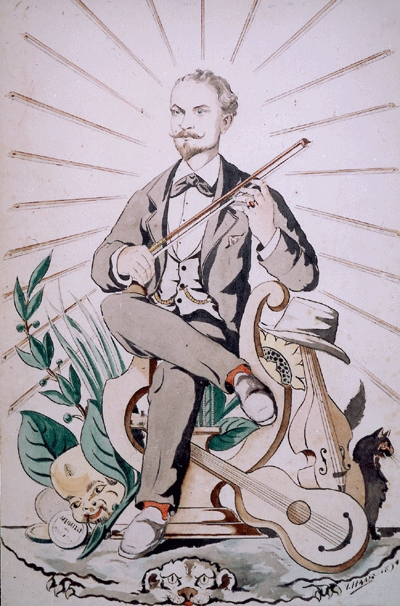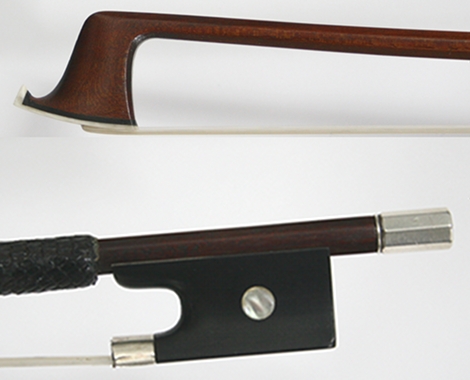THE IMPORTANCE TO BE PECCATTEIf what my my father used to say is true, that the sons of the cats chase mice, it is also true that sometimes the sons do not run as fast as the fathers and the mice run away!
Charles Francois Peccatte The fact that a son or a nephew, doesn't own the same abilities of his father or uncle in this case, it is quite obvious. The bowmaking story is full of sons born from famous fathers who have continued this work, although with different results. As in the case of Bazin or Morizot, the difference between fathers and sons is not of such vital importance, because both of them were just (and I say this respectfully) good craftsmen. When dealing with a family like the Peccattes the speech is different and the exchange of person can be very important. The name Peccatte is so bright that it often dazzles our mind and yet already between the two brothers there was an enourmous technical and artistic difference. With his nephew, Charles Francois any comparison is not even approachable. Besides not having a manual sublime talent like his uncle and father,he has not even had the possibility to be trained and prepared by them. He was born in Mirecourt on October 14, 1850 and the following year the family will move to Paris. Francois, probably not in a good relationship with his brother Dominique, tries to find luck in the capital, but unfortunately, five years after the transfer, dies leaving his wife and son alone. The financial problems become urgent in this period and the widow survives only thanks to the rent of the house in Mirecourt sold in 1851 by her husband before moving to Paris. In 1862, at the age of twelve years, Charles has to decide which job to undertake and given the name he bears and the unrelenting pressures of Auguste Lenoble,who through the sheets of the widow and the surname Peccatte, was trying to carve out a career, chooses the bow making. The first teacher, and the second tragedy after the death of his father, Charles is just Lenoble,as Raffin says in "L'Archet",if he were not so close to the Peccattes, he would not even be worth remembering him as a bowmaker . Three years later he meets his real Master. Thanks to its name, and to the esteen that Vuillaume had for both his father and uncle, he hires him in his laboratory and gives him to the care of Francois Nicolas Voirin, who will affect both his stylistic and mechanic for the rest of his life. In 1870 he makes his military service and on the 16th June of '72 he hastily marries Marie Moulle. The reason for such haste is explained by birth date of his daughter Marie Eugenie, the 28th August of the same year! In 1874 he begins a partnership with Lenoble, that ,as already said, only tries to exploit his name for commercial purposes. In these years his business go so badly, that he is forced to apply for a state employment to support his family. On March 13, 1881 his mother dies and from that moment Charles definitely stops any kind of relationship with his never officially recognized stepfather Lenoble and opens his own business. In 1885 he wins the silver medal in the Antwerp Contest in Belgium and in 1889 he wins another one at the Paris one. In the same years Eugene Sartory attends his laboratory for a short time and probably he is inspired by him to design his own model. Eugene Sartory in the same year he attended for a short time his laboratory and probably inspired him to design their own model. He will never close his business and probably he goes on working until the day of his death on October 22, 1918.
Violin bow with ebony and silver Charles Francois Peccatte Stylistically, you never define him in a deep way. In the bow of the photo , for instance the first thing that strikes the eye is the inconsistency between the head and the frog. While the first is a hybrid of Peccattiane lines adapted to Vorini's geometries, the frog resembles Sartory, with the support of the thumb in a slipped way and a longer plate. The mechanic is the biggest difference between him and his two illustrious predecessors. Having learned to build with Voirin, and being the latter that , as mentioned last week, totally revolutionized the concept of curve, Charles adopted the innovation of his master, this one will be called " Sartory Curve "in the future. And now a small confirmation of my ideas of parallelism. So long Paolo
|
   |







